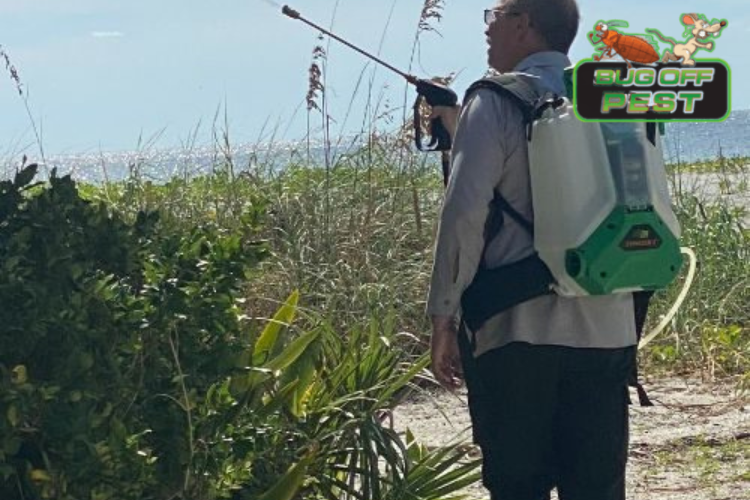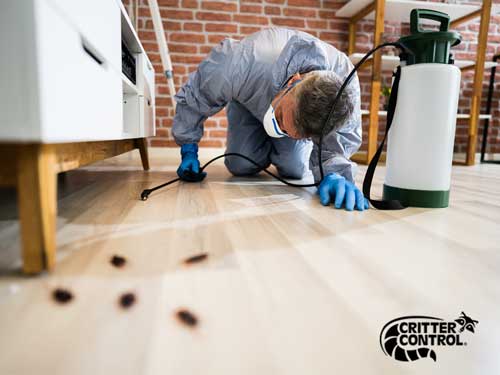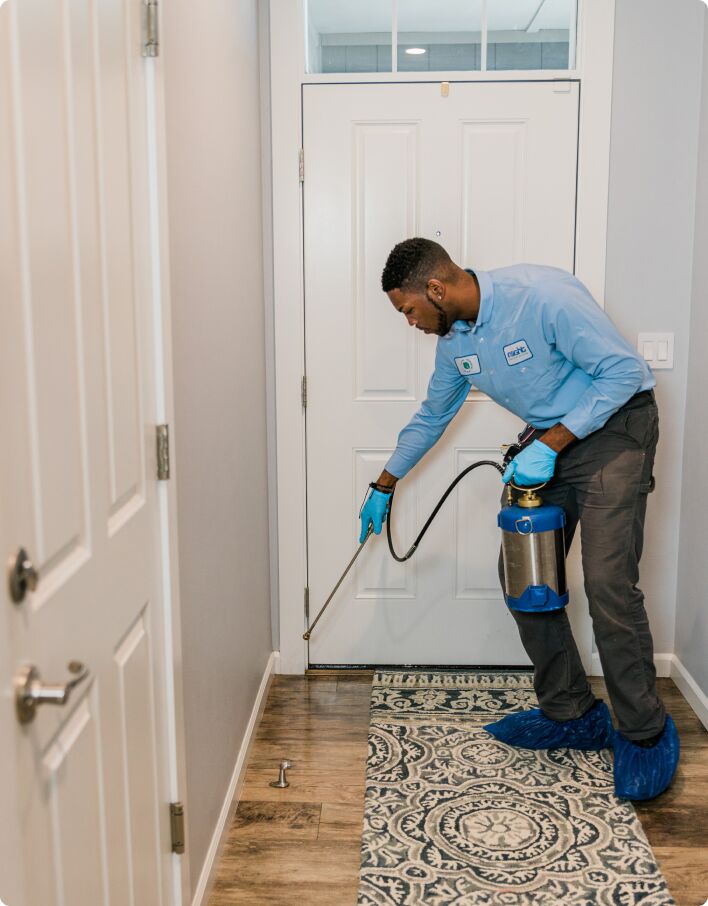Highly-rated Pest Control in Charlotte County for Your Residence and Office
Discover the current Advancements in Bug Control and How to Implement Effective Treatment Solutions
Recently, the area of bug control has actually observed considerable improvements, driven by the demand for effective and lasting treatment remedies. Innovative approaches such as Integrated Pest Management (IPM) combine environment-friendly experiment advanced innovation, boosting both effectiveness and ecological obligation. The assimilation of wise innovations and DIY techniques has empowered individuals to deal with pest concerns a lot more properly. As we explore these growths, it becomes necessary to comprehend how best to execute these approaches in numerous settings to attain optimal results. The ramifications for bug management practices could be transformative.
Eco-Friendly Bug Control Options
Recently, the demand for environmentally friendly bug control options has actually risen as organizations and home owners alike seek lasting choices to conventional chemical therapies. This shift is driven by expanding ecological recognition and a desire to lessen the wellness risks connected with artificial chemicals.

Green pest control techniques incorporate an array of strategies that focus on making use of all-natural substances and methods. Integrated Bug Management (IPM) is one such strategy, combining biological, cultural, and mechanical strategies to take care of parasite populaces while reducing dependence on chemicals (Wildlife removal services). This holistic technique stresses avoidance with environment adjustment and the introduction of all-natural killers, therefore fostering a well balanced environment
Another popular choice is using herb chemicals obtained from plants, which have a tendency to be less dangerous to non-target organisms. Products like neem oil and diatomaceous earth have gained traction for their performance in regulating pests while presenting marginal risks to human health and the environment.
Additionally, exemption strategies, such as securing entry factors and preserving sanitation, play a crucial role in environmentally friendly parasite management. By embracing these sustainable techniques, businesses and people can effectively manage pests while promoting a much healthier planet for future generations.
Smart Modern Technology in Parasite Management
Development is improving the landscape of insect monitoring, with wise technology becoming an essential pressure in boosting effectiveness and effectiveness - Wildlife removal services. The combination of Net of Things (IoT) gadgets, expert system (AI), and data analytics is revolutionizing just how parasite control specialists come close to invasions
Smart traps equipped with sensing units can find insect activity in real-time, sending out immediate signals to operators. This permits for prompt actions, lessening damage and minimizing the need for comprehensive treatments. Furthermore, AI formulas evaluate historical data to anticipate insect behavior, allowing proactive interventions based upon environmental problems and problem patterns.
Drones and automatic automobiles are also playing a considerable role in bug monitoring, providing airborne evaluations of huge areas, identifying hotspots, and also distributing targeted therapies. These modern technologies not only simplify procedures but also enhance safety by restricting human direct exposure to potentially harmful chemicals.
In addition, mobile applications empower customers to monitor bug activity and gain access to specialist advice, promoting a collaborative technique to pest management. On the whole, the fostering of clever innovation is establishing a brand-new criterion in bug control, stressing data-driven decisions and sustainable practices that ultimately benefit both professionals and homeowners alike.
Integrated Insect Management Approaches
Integrated Pest Administration (IPM) employs an all natural method to pest control, combining different approaches to effectively manage pest populations while reducing dangers to human health and wellness and the setting. IPM revolves around comprehending the pest life cycle, their natural opponents, and the ecological community in which they grow.
Among the basic components of IPM is checking pest populations with normal evaluations and data collection. This enables the recognition of bug thresholds, establishing when treatment is necessary. Social techniques, such as plant environment, rotation, and hygiene control, are important in decreasing parasite prevalence and advertising plant health and wellness.
Mechanical controls, address including catches and barriers, are additionally essential in IPM. These approaches can literally get rid of or hinder pests without using chemicals. When needed, the cautious application of chemical controls is utilized, concentrating on targeted treatments that decrease ecological influence.
Education and collaboration among stakeholders, including farmers, parasite control specialists, and the neighborhood, are crucial for the effective execution of IPM techniques. By prioritizing sustainable practices, IPM not just addresses pest issues yet additionally fosters a healthier environment.
Biological Control Techniques
Many organic control approaches are increasingly acknowledged for their performance in handling parasite populations while advertising eco-friendly equilibrium. These approaches harness all-natural predators, bloodsuckers, and pathogens to lower pest numbers without counting on artificial chemicals. For example, the introduction of ladybugs can properly control aphid populaces, while nematodes target soil-dwelling bug larvae.
Furthermore, making use of microbial pesticides, such as Bacillus thuringiensis (Bt), offers an eco-friendly choice for managing caterpillar bugs. These products specifically target pest types, decreasing damage to valuable pests and pollinators. In addition, preservation biological control highlights enhancing habitats for natural adversaries, such as birds and useful bugs, thereby motivating their visibility in farming systems.
Research study proceeds to reveal cutting-edge strategies within this area, such as the usage of pheromones to interrupt pest mating patterns or the growth of biocontrol agents via hereditary design. Executing these methods can lead to sustainable insect monitoring practices that alleviate the reliance on chemical how to eliminate bed bugs treatments, eventually promoting healthier ecosystems. As recognition of these techniques expands, they are ending up being integral parts of incorporated parasite management (IPM) techniques, supplying an equilibrium in between efficient pest control and environmental stewardship.
DIY Pest Control Solutions
As property owners look for effective methods to tackle pest concerns, DIY bug control services have actually obtained appeal for their ease of access and cost-effectiveness. These methods equip people to deal with invasions utilizing conveniently available materials and methods, usually without the requirement for professional treatment.

Additionally, maintaining proper hygiene and regular evaluations can protect against pest entrance and nesting (Wildlife removal services). Simple practices, such as sealing cracks, removing food resources, and decluttering, can substantially reduce insect populations. Catches, both homemade and commercially readily available, can likewise provide effective solutions for surveillance and regulating details pests like insects or rats

Final Thought
The assimilation of environmentally friendly insect control options, smart modern technology, and cutting-edge monitoring techniques presents a comprehensive technique to reliable insect management. By embracing Integrated Parasite Administration (IPM) and using organic control approaches, alongside Do it yourself options, accountable and sustainable pest control can be accomplished.
Eco-friendly bug control techniques encompass an array of approaches that focus on the usage of natural substances and methods. Integrated Pest Monitoring (IPM) is one such method, integrating organic, social, and mechanical tactics to manage parasite populaces while reducing dependence on chemicals. As recognition of these strategies do pest control grows, they are ending up being integral parts of incorporated bug administration (IPM) methods, providing an equilibrium between effective parasite control and environmental stewardship.
The assimilation of environmentally friendly pest control alternatives, wise modern technology, and cutting-edge monitoring methods provides an extensive strategy to reliable bug monitoring. By embracing Integrated Insect Administration (IPM) and utilizing biological control techniques, alongside DIY services, responsible and sustainable pest control can be attained.